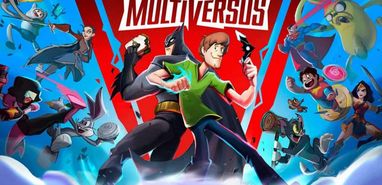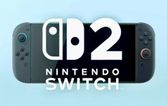
MultiVersus Review in Progress – Caught in a BetaVerse
MultiVersus exemplifies how even the most recognizable properties don’t guarantee the success of a live service game. Launched in open beta in July 2022 with microtransactions, the platform fighter developed by Player First Games was abruptly taken offline the following year. While the declining player numbers since launch may have influenced this decision, the developer assured that MultiVersus would return in 2024, significantly improved based on player feedback.
MultiVersus is now back online and officially out of beta, but it’s challenging to view this version as the definitive 1.0 release. Instead, it feels more like another beta version, where unfortunately, the negatives currently outweigh the positives.
At its core, the latest version of MultiVersus isn’t vastly different from the game we played in 2022 and 2023. Borrowing heavily from the Super Smash Bros. series, the game is a platform fighter where players must knock opponents off the stage, focusing on 2 versus 2 gameplay and featuring a diverse roster of characters from Warner Bros. properties. Stages are as varied as the playable cast, inspired by iconic locations such as the Batcave, the Red Keep’s throne room from Game of Thrones, and many others.
Once again, the diverse roster of characters and stages are the highlights of the experience, thanks to their excellent design. Characters, for example, are quite varied, and their movesets take full advantage of their unique quirks. Tom and Jerry are very technical fighters who can put together some nasty setups, and Batman can use some of his most iconic gadgets to control the flow of battle. Some of the new additions to the roster, like the Joker, Jason from Friday the 13th, and Banana Guard from Adventure Time, are just as well-designed as the previously released cast, their movesets filled with references that the most hardcore fans will appreciate.
With the exception of Support characters, who were reworked into different classes, the characters from the beta play pretty much the same, retaining most of their movesets. Despite this, the game initially felt off due to some significant gameplay changes, such as the much slower pace of combat. This change was clearly made to improve screen readability and prevent matches from becoming chaotic as they often did in the beta. However, slowing things down this much wasn’t the best decision. With a slower speed, combat should have felt weightier, but this isn’t the case here, mainly due to the animations and a certain “stickiness” that makes them feel sluggish. The overall floatiness that put me off in the beta wasn’t addressed at all, making air combat feel unsatisfying compared to the Smash series. Thankfully, damage over 100 points significantly increases knockback, making it much easier to score knockouts compared to the beta, where matches felt too prolonged, especially in 1v1.
Another element of combat that was off-putting in the beta, the Perks, which grant characters various bonuses, have been slightly reworked. Although they don’t feel as crucial now, I still believe they should be disabled in any competitive mode. As online play is currently limited to casual matchmaking, hopefully, Player First Games will remove them in ranked mode, although I am not too hopeful since that wasn’t the case in the beta. The zoomed-in camera is another change over the beta I would have happily done without, as it doesn’t provide a very good view of the stage. The colored outlines, while distracting, are helpful in team matches to keep track of your companion.
The gameplay changes, however, are not the primary reason I feel MultiVersus is still in beta. Compared to the previous version, the current one lacks essential features, such as leaderboards, after-battle reports, advanced tutorials in training mode, the ability to change controller settings in the training room, and more. The worst issue, however, is the inability to try out characters that haven’t been purchased in training mode and local play. This seems like a significant oversight, considering that every character costs the same amount of Gleamium and Fighter Currency. The latter can be obtained, albeit slowly, by playing the game, but players should still be allowed to try out a character before purchasing, given the money and time investment.
The multiple currencies, which also include Perk Currency to unlock Perks and Prestige Currency used to unlock rare cosmetics, are just a small part of the free-to-play aspects that drain the joy out of MultiVersus. There isn’t a single moment you aren’t constantly reminded of the multiple currencies, Missions, Battle Passes, and microtransactions, and I find this extremely off-putting. The convoluted main menu doesn’t help either, having been designed more to accommodate these constant reminders than to feel functional, in my opinion. Making matters worse is how the free-to-play mechanics don’t feel fair at all. Battle Pass experience, for example, is only obtained after completing Missions, so progression stops after clearing all available ones. To make another example, you need to master around 10 different characters to obtain enough Fighter Currency to purchase one character, not counting any currency obtained by completing Missions.
Alongside the gameplay changes and new additions to the roster, the latest version of MultiVersus introduces Rifts, a single-player mode featuring various combat scenarios and mini-games, as well as different difficulty levels to test your skills. These Rifts, unfortunately, are not particularly engaging, as the skeletal story they feature isn’t very compelling, and the combat scenarios and mini-games tend to become repetitive quickly. Hopefully, future Rifts will address these issues and become a fun side activity when one isn’t in the mood for online matches.
As mentioned above, MultiVersus currently only features casual matchmaking for 1v1 and 2v2 at the time of writing. Without skill-based matchmaking, players of all skill levels are getting matched together, which doesn’t always translate into a good experience. The game’s rollback netcode isn’t the best either, with noticeable input delay even when the action appears smooth. Servers are still under pressure, so having a smooth match is rare at this point. Wi-Fi and rollback frame indicators would have improved the online experience, especially in 2v2, where a poor internet connection is more impactful than in 1v1.
Considering MultiVersus has only recently been re-released, and things will undoubtedly be tweaked in the future, scoring the game in its current state is difficult. While the free-to-play aspects are unlikely to change, tweaks and additional content could significantly improve the experience in the long term, making it a worthy competitor to Super Smash Bros. and other popular platform fighting games. As of now, however, much of MultiVersus’s potential remains untapped, and it will be up to Player First Games to let the seed they have planted flourish.








By Andrej Kovacevic
Updated on 8th June 2024